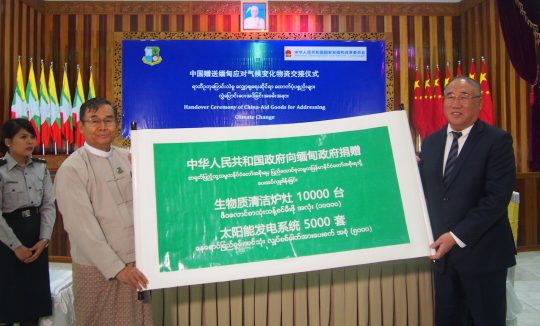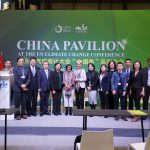Renewable Energy
Energy and Climate Change ProgramRenewable Energy Implementation

Summary
Needs & Approach
Objectives
Impacts
Updates
Details & Support
China is one of the world’s leaders in renewable energy technology development but as high curtailment rates suggest, implementation is still less than ideal. Furthermore, as China expands internationally, there is an opportunity for Chinese renewable energy technology to similarly go abroad.
GEI’s renewable energy implementation project provides quantitative methods for renewable energy planning and implementation, in China and abroad.
Needs:
Policy makers in China and abroad require access to methods and tools for renewable energy planning.
Approach:
Introduce a toolkit for policy making decision makers and conduct pilot projects to demonstrate actual implementation and execution.
To establish scientific and quantitative methods and tools that assist local governments to assess the costs and benefits of renewable energy technology and the impact of these technologies on regional macroeconomics, in order to ultimately achieve sustainable, economic growth.
Renewable Energy Implementation in Myanmar
We worked to facilitate the donation of renewable energy technology – namely solar home lights and clean energy cookstoves – to Myanmar via China’s South-South Cooperation for Climate Change in early 2016.
Scoping RE in China’s Economic Zones: Guangdong Huangpu EDZ Pilot
GEI led a team from CCS and GIEC to do the first ever renewable energy capacity calculation for a special economic zone in China from 2016-2017.
Focusing on the Huangpu Economic Development Zone (EDZ) in Guangdong Province, we developed a RE plan for the EDZ to efficiently reach its low-carbon growth goals and lead the development of other EDZ throughout Asia.
Planning Sri Lanka’s 1st Low Carbon Town: Belt and Road RE Pilot
Ensuring that the Belt and Road Initiative is a green Chinese initiative requires capacity building on the local level. Working with the CCS and Sri Lanka Mahaweli Ministry of Environment and Development, GEI conducted a pilot scoping and planning of
Sri Lanka’s first ever low-carbon town in 2017.
We used GIS system tools, RE technology screening, policy cost-benefit analysis, and financial mechanism analysis. This work was shared at COP24 in Bonn, Germany
Renewable Energy Implementation in Myanmar
After the renewable energy donation in 2016, we also held a 2-day workshop in June 2018 for Myanmar policy makers to help them better understand the implications and utilizations of the toolkit.
Scoping RE in China’s Economic Zones: Guangdong Huangpu EDZ Pilot
– Our analysis showed that the Huangpu EDZ needed 67MW and 60MW of solar energy within its two parks if it was to meet 2020 goals.
– Through intensive exchanges, we increased willingness for PV power generation and helped the parties to formulate business models and supportive policies.
Planning Sri Lanka’s 1st Low Carbon Town: Belt and Road RE Pilot
– 1.8MW Solar PV and 5.4 MW biomass added through our project can help Gampola be a 100% green town.
– This work will improve electricity access, help spur local development and conserve Sri Lanka’s precious ecosystems.
Partner:
International Partner: US-based, Center for Climate Strategies; Sri Lanka Mahaweli Ministry of Environment and Development.
Domestic Partners: Chinese Academy of Sciences – Institute of Science and Development; Shanxi Province Ecological Environment Research Center; Guangdong Academy of Social Sciences.
Duration: 2017 – present
Location: China
Donor: blue moon fund; Rockefeller Brothers Fund
Project Highlight
Sri Lanka Low-Carbon Demonstration Town
As a key country along China’s Belt and Road Initiative, Sri Lanka’s sustainable development could set a positive precedent for China outbound investment in other developing countries. However, only 4% of the country’s electricity came from renewable sources as of 2017 – a sobering reality considering Sri Lanka pledged a 20% reduction in green house gas emissions by 2030.
As GEI has repeatedly demonstrated, development need not come at the expense of environmental protection and China has great experience to share for how to transition to a more sustainable growth model.
In 2017, we set our sights on the Belt and Road and began promoting bilateral cooperation for China’s South-South Cooperation for Climate Change ’10-100-1000’ projects between China and Sri Lanka. Our goal was to engage multiple stakeholders including government, research institution and business sector for renewable energy implementation, which could potentially culminate in Sri Lanka’s first low-carbon demonstration zone.
Over the course of the year, GEI undertook a scoping project to calculate the country’s past and current energy mix, and the renewable energy needs specific to Gampola Town. We used our own renewable energy implementation toolkit which includes Geographic Information Systems (GIS) to analyze Gampola’s potential for solar and biomass energy as well as a cost-benefit analysis of technology implementation.
In the end, we proposed the following 3-part plan for Gampola to become Sri Lanka’s first low-carbon demonstration town: first, solar lights strategically located over 22,670m2 can accumulate about 2.0MW, second, mixed-source biomass power can accumulate nearly 5.50MW; and third, green travel can support local and national development. This work of quantitative policy analysis, cost-benefit analysis and finally piloting, internationally expands our track-record of renewable energy planning in China’s special economic zones and exemplifies productive South-South Climate Cooperation.
In addition to sharing our work with the Chinese and Sri Lankan governments, GEI and the Sri Lanka Ministry of Mahaweli Development and Environment had the pleasure of sharing our findings and encouraging more developing countries to engage in scientific climate-change policymaking at China Pavilion COP23 side-event “China Renewable Energy Development and Responses to Climate Change” in Bonn, Germany on November 9, 2017. The side event was co-hosted by GEI, The Nature Conservancy (TNC) and Energy Research Institute National Development and Reform Commission (ERI) and welcomed public, private, government and non-government participants from around the world.
GEI plans to continue the Sri Lanka low carbon demonstration project into 2018. By promoting that China and Sri Lanka work together on climate change via the South-South Cooperation, we hope to encourage that China increasingly engage in green investment in all Belt and Road countries.



